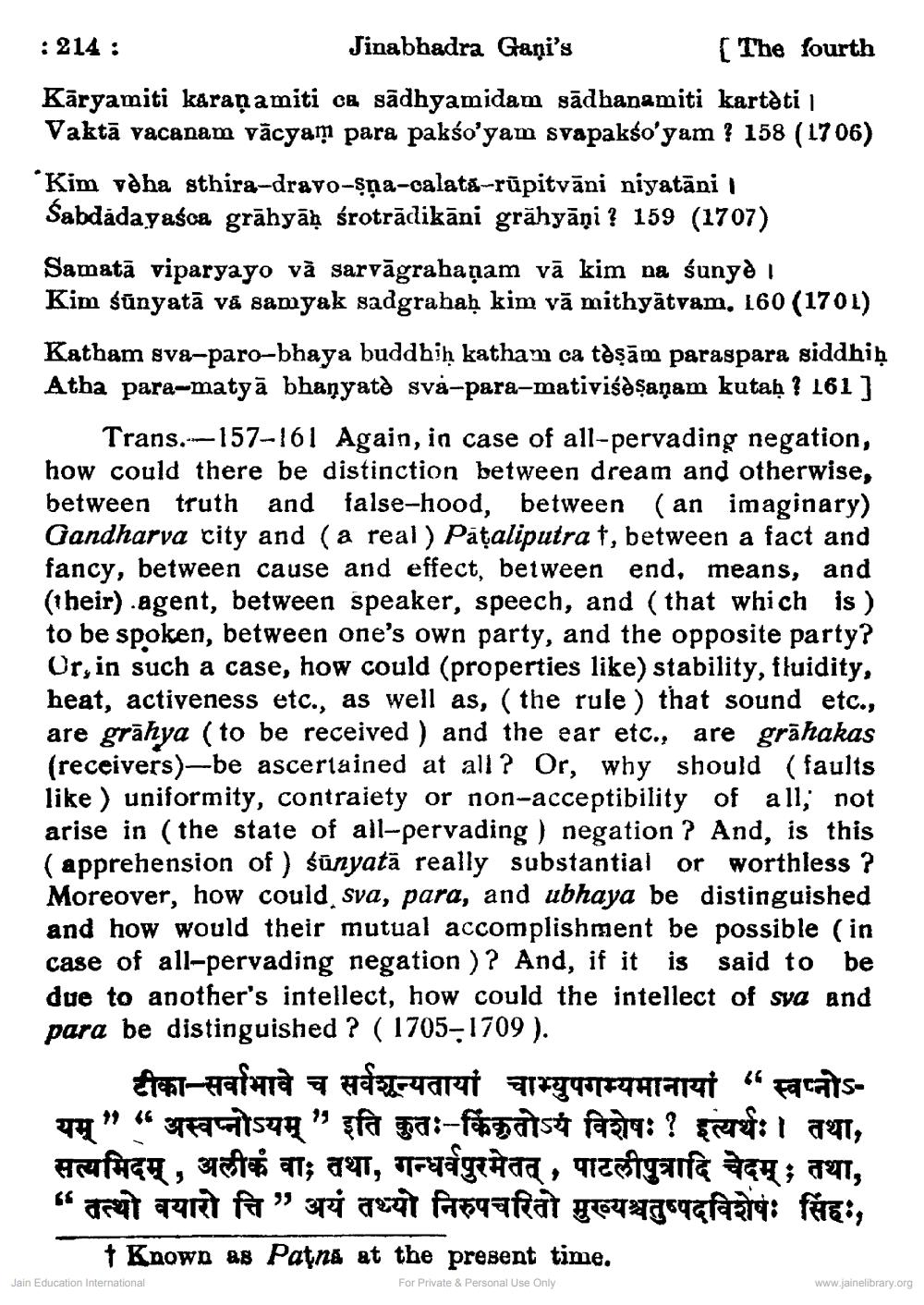________________
: 214:
Jinabhadra Gani's
[The fourth
Kāryamiti karaṇamiti ca sadhyamidam sādhanamiti kartèti | Vaktā vacanam vācyam para pakśo'yam svapakso'yam? 158 (1706)
Kim vèha sthira-dravo-ṣṇa-calata-rūpitvāni niyatāni | Sabdadayaśca grāhyāḥ śrotrādikāni grāhyāņi? 159 (1707)
Samatā viparyayo và sarvāgrahaņam vā kim na śunyè Kim śūnyatā và sanyak sadgrahah kim và mithyātvam, 160 (1701) Katham sva-paro-bhaya buddhiḥ katham ca tèṣām paraspara siddhiḥ Atha para-matyā bhaṇyatè sva-para-mativiśèṣaṇam kutaḥ? 161]
Trans. 157-161 Again, in case of all-pervading negation, how could there be distinction between dream and otherwise, between truth and false-hood, between (an imaginary) Gandharva city and (a real) Pățaliputra †, between a fact and fancy, between cause and effect, between end, means, and (their) agent, between speaker, speech, and (that which is ) to be spoken, between one's own party, and the opposite party? Or, in such a case, how could (properties like) stability, fluidity, heat, activeness etc., as well as, (the rule) that sound etc., are grahya (to be received) and the ear etc., are grahakas (receivers)-be ascertained at all? Or, why should (faults like) uniformity, contraiety or non-acceptibility of all, not arise in (the state of all-pervading) negation? And, is this ( apprehension of) sunyata really substantial or worthless ? Moreover, how could sva, para, and ubhaya be distinguished and how would their mutual accomplishment be possible (in case of all-pervading negation)? And, if it is said to be due to another's intellect, how could the intellect of sva and para be distinguished? (1705-1709).
टीका - सर्वाभावे च सर्वशून्यतायां चाभ्युपगम्यमानायां "स्वप्नोऽयम् ” “ अस्वप्नोऽयम् " इति कुतः - किंकृतोऽयं विशेषः ? इत्यर्थः । तथा, सत्यमिदम्, अलीकं वा; तथा, गन्धर्वपुरमेतत्, पाटलीपुत्रादि चेदम् ; तथा, " तत्थो बयारो त्ति " अयं तथ्यो निरुपचरितो मुख्यश्चतुष्पदविशेषः सिंहः,
† Known as Patna at the present time.
For Private & Personal Use Only
Jain Education International
www.jainelibrary.org




